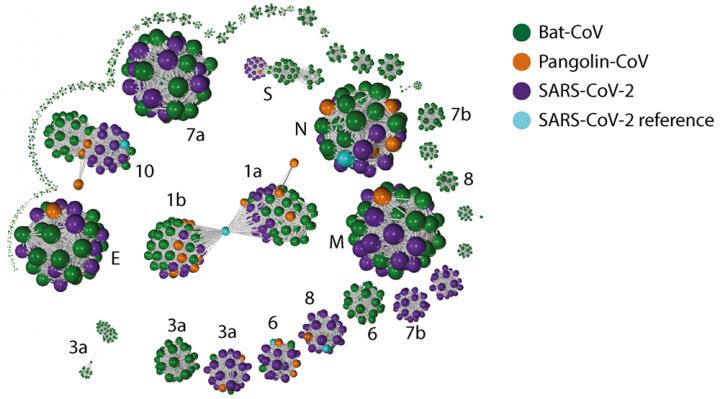Study gives clues on animal origin of coronavirus
Comparing genes of coronaviruses that affect people, bats and pangolins provides insights into the beginning of the pandemic.

Further clues about the potential origins of the novel coronavirus and its transmission to humans have been revealed in a study of coronaviruses’ genes in different species.
An ancestor of the virus was once present in both bats and pangolins before reaching humans, the study suggests, adding to previous support for this idea.
However, further research is needed to find the animal coronavirus that first infected people, scientists concluded.
A number of high-impact coronavirus variants in bats and pangolins identified in the study could guide vaccine design and development.
Similar coronaviruses
Scientists have compared coronaviruses affecting bats and pangolins to the virus causing Covid-19 in people –called SARS-CoV-2 –using a novel hybrid computational approach.
The study, published in the journal MDPI Viruses, identified genes that are specific to coronaviruses affecting each species, as well as parts of genes that are commonly seen in coronaviruses affecting bats and pangolins.
One of the pangolin coronaviruses is more similar to SARS-CoV-2 than the other pangolin viruses analysed, scientists found.
The work builds on a previous study that started during a hackathon event, at which the team from Roslin and Aberystwyth University used hundreds of publicly available coronavirus genomes to compare SARS-CoV-2 to its closest genetic relatives in bats and pangolins.
This work has shown that there are types of coronaviruses found in both pangolins and bats which are genetically more similar to the human SARS-CoV-2 virus than to other viruses from the same hosts.
After examining all publicly available coronavirus genomes for bats and pangolins, we noted a handful of bat coronaviruses and all seven pangolin coronaviruses to be very similar to SARS-CoV-2. Our study emphasises the need for further analyses of coronaviruses from suspected animal species. Bridging this knowledge gap may help us better understand the process that enables the virus to infect humans.


